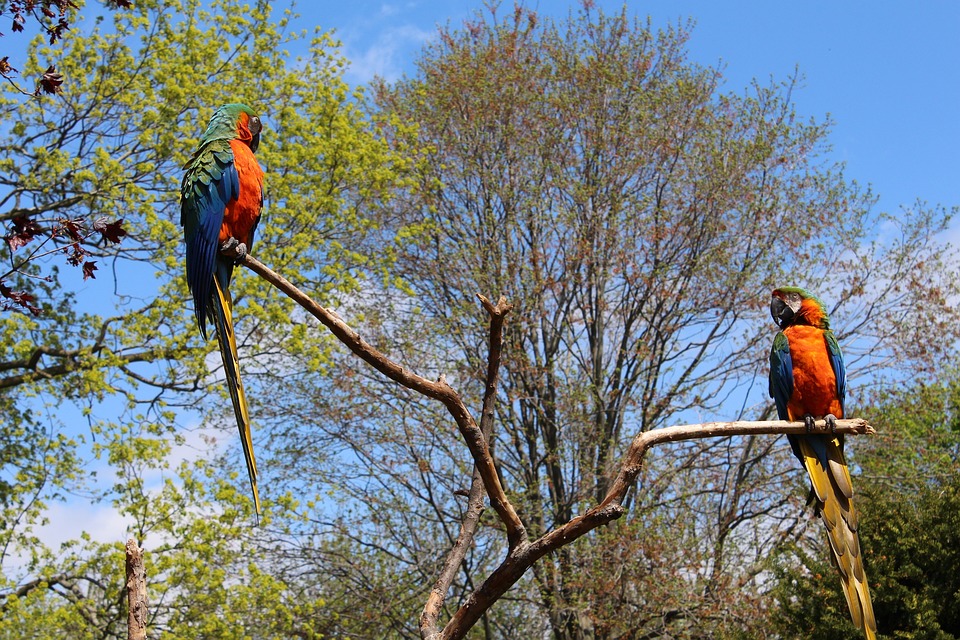Parrots are highly intelligent and social creatures, known for their vibrant colors, remarkable mimicry abilities, and playful personalities. However, just like any other pet, parrots require proper training and socialization to thrive in a domestic environment. Positive reinforcement is a powerful tool that can be used to build trust and confidence in your parrot, fostering a strong bond between you and your feathered friend. In this article, we will explore effective strategies to use positive reinforcement in parrot training, helping you establish a harmonious and fulfilling relationship with your beloved pet.
Understanding Positive Reinforcement
Positive reinforcement is a training technique that involves rewarding desired behaviors to encourage their repetition. The emphasis is placed on rewarding good behavior rather than punishing undesirable actions. This approach not only motivates your parrot to engage in positive behaviors but also helps create a trusting and secure environment. By using rewards such as treats, praise, and playtime, you can shape your parrot’s behavior while building a strong bond based on trust and mutual respect.
Creating a Positive Environment
Before diving into training techniques, it is essential to create a positive environment for your parrot. Parrots thrive in an environment that provides mental stimulation, physical exercise, and social interaction. Here are some key factors to consider:
1. Adequate Cage Size: Ensure your parrot’s cage is spacious enough to allow for movement and exercise. Provide perches, toys, and mental enrichment activities to keep your parrot engaged and stimulated.
2. Social Interaction: Parrots are highly social animals and require regular interaction with their human companions. Spend time talking, playing, and engaging in activities with your parrot to establish a strong bond.
3. Consistent Routine: Parrots thrive on routine. Establish a consistent daily schedule for feeding, training sessions, playtime, and rest. Consistency helps your parrot feel secure and confident.
Using Positive Reinforcement in Training
Now that you have created a positive environment for your parrot, let’s dive into the training techniques that leverage positive reinforcement to build trust and confidence.
1. Identify Desired Behaviors: Begin by identifying the behaviors you want to encourage in your parrot. These can include stepping onto your hand, talking on command, or playing with specific toys.
2. Choose Appropriate Rewards: Determine the rewards that motivate your parrot. This could be a favorite treat, verbal praise, or even access to a favorite toy. Experiment with different rewards to find what works best for your individual parrot.
3. Timing is Key: When using positive reinforcement, timing is crucial. Immediately reward your parrot as soon as they demonstrate the desired behavior. This helps your parrot associate the reward with the behavior, reinforcing the connection.
4. Use a Clicker or Verbal Marker: A clicker or a verbal marker, such as saying “good” or “yes,” can be used to signal the exact moment your parrot performs the desired behavior. This marker becomes a bridge between the behavior and the reward, helping your parrot understand what they are being rewarded for.
5. Shape Behavior Gradually: Break down complex behaviors into smaller, achievable steps. Reward your parrot for each step towards the desired behavior, gradually shaping their behavior until they achieve the final goal. This method prevents frustration and builds confidence.
6. Consistency and Repetition: Consistency is key when using positive reinforcement. Repeat training sessions regularly, reinforcing desired behaviors each time. Over time, your parrot will learn to associate the behavior with the reward, making it a habit.
FAQs
Q1: Can positive reinforcement be used to correct unwanted behaviors in parrots?
A1: Positive reinforcement is primarily focused on encouraging and reinforcing desired behaviors. However, it can indirectly help address unwanted behaviors by redirecting your parrot’s attention towards more positive alternatives. In cases of severe behavioral issues, it is recommended to seek professional advice from an avian behaviorist.
Q2: How long does it take to see results with positive reinforcement training?
A2: The time it takes to see results can vary depending on the individual parrot and the complexity of the behavior being trained. Some parrots may learn quickly, while others may require more time and patience. Consistency, repetition, and a calm training environment are key to achieving successful results.
Q3: Are there any behaviors that should not be reinforced with positive reinforcement?
A3: While positive reinforcement is an effective training tool, it is important to ensure that undesired behaviors are not inadvertently reinforced. For example, if your parrot screams for attention, rewarding them immediately may reinforce the screaming behavior. It is essential to understand the underlying cause of the behavior and address it accordingly.
Q4: Are treats the only suitable rewards for positive reinforcement?
A4: While treats are commonly used as rewards, they are not the only suitable option. Verbal praise, head scratches, playtime, or access to a favored toy can be equally effective rewards. Experiment with different rewards to find what motivates your parrot the most.
Using positive reinforcement to build trust and confidence in your parrot is a rewarding journey for both you and your feathered companion. By creating a positive environment, understanding the principles of positive reinforcement, and being consistent in your training, you can foster a strong bond and encourage positive behaviors in your parrot. Remember, patience and perseverance are essential, and always tailor your training techniques to suit your individual parrot’s needs.









